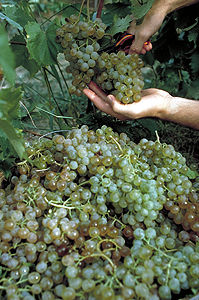Article
Goldeye
The goldeye (Hiodon alosoides) [Lat alosoides, "shadlike"] is a relatively small, opportunistic foraging freshwater fish of the family Hiodontidae (order Osteoglossiformes).

Enter your search term
Signing up enhances your TCE experience with the ability to save items to your personal reading list, and access the interactive map.
Create AccountArticle
The goldeye (Hiodon alosoides) [Lat alosoides, "shadlike"] is a relatively small, opportunistic foraging freshwater fish of the family Hiodontidae (order Osteoglossiformes).
"https://d3d0lqu00lnqvz.cloudfront.net/media/media/1f30454a-69e7-4977-b067-8b98b22b696d.jpg" // resources/views/front/categories/view.blade.phphttps://d3d0lqu00lnqvz.cloudfront.net/media/media/1f30454a-69e7-4977-b067-8b98b22b696d.jpg

Article
The goose is a member of a widespread group of waterfowl ranging in size from the giant Canada goose to the diminutive cackling goose.
"https://d3d0lqu00lnqvz.cloudfront.net/media/media/5e311859-b5d7-46ef-befe-32aa173736d6.jpg" // resources/views/front/categories/view.blade.phphttps://d3d0lqu00lnqvz.cloudfront.net/media/media/5e311859-b5d7-46ef-befe-32aa173736d6.jpg

"https://d3d0lqu00lnqvz.cloudfront.net/media/media/5e713bf8-620f-427b-913e-8ba7d6eba19b.jpg" // resources/views/front/categories/view.blade.phphttps://d3d0lqu00lnqvz.cloudfront.net/media/media/5e713bf8-620f-427b-913e-8ba7d6eba19b.jpg

Article
Graphite is one of the 4 allotropes of carbon. The other allotropes are Diamond, the fullerenes also known as "bucky balls" and amorphous carbon (charcoal, coke and carbon black). These allotropes of the same element carbon have very different crystal structures and physical properties. There are 2 types of graphite - natural and synthetic. Natural graphite is black with a sub-metallic lustre, feels greasy and stains the fingers. Graphite is found mainly in Metamorphic Rocks, most frequently in schist and as small crystals in impure marbles in association with other minerals.
"https://d3d0lqu00lnqvz.cloudfront.net/media/media/ccbf9884-f122-47b6-a979-572a2dfd24eb.jpg" // resources/views/front/categories/view.blade.phphttps://d3d0lqu00lnqvz.cloudfront.net/media/media/ccbf9884-f122-47b6-a979-572a2dfd24eb.jpg

Article
Emergence of GrasslandsGrasslands began to appear about 25 million years ago, changing the face of much of the world and providing food for grazing animals. Grasses and grazers evolved together. Grasses benefit because grazers control the growth of competing species and provide fertilizers.
"https://d3d0lqu00lnqvz.cloudfront.net/media/media/64128275-0625-4ef5-8669-b94e659285cb.jpg" // resources/views/front/categories/view.blade.phphttps://d3d0lqu00lnqvz.cloudfront.net/media/media/64128275-0625-4ef5-8669-b94e659285cb.jpg

Article
Grasshopper is the common name for straight-winged insects which, together with locusts, make up the order Orthoptera.
"https://www.thecanadianencyclopedia.ca/images/tce_placeholder.jpg?v=e9dca980c9bdb3aa11e832e7ea94f5d9" // resources/views/front/categories/view.blade.phphttps://www.thecanadianencyclopedia.ca/images/tce_placeholder.jpg?v=e9dca980c9bdb3aa11e832e7ea94f5d9

Article
The gray ratsnake (Pantherophis spiloides) is a non-venomous snake native to eastern North America. It is one of the largest snake species in North America. In Canada, the gray ratsnake is only found in southern Ontario, where it is restricted to two disjunct regions. Canadian populations are declining due to a variety of threats, including road mortality, habitat loss and intentional persecution by people. It is classified as a species at risk under Canada’s Species at Risk Act.
"https://d3d0lqu00lnqvz.cloudfront.net/grayratsnake/Gray-Ratsnake.jpg" // resources/views/front/categories/view.blade.phphttps://d3d0lqu00lnqvz.cloudfront.net/grayratsnake/Gray-Ratsnake.jpg

Article
The gray treefrog (Dryophytes versicolor, synonym Hyla versicolor) is a small to medium-sized treefrog native to Central and Northeastern North America. In Canada, they are found in New Brunswick, Quebec, Ontario, Manitoba and a small part of Eastern Saskatchewan. Gray treefrogs are well camouflaged; the scientific name versicolor means “changing colour” and refers to the frog’s ability to make their skin lighter or darker. Gray treefrogs have one of the loudest calls of any North American frog.
"https://d3d0lqu00lnqvz.cloudfront.net/graytreefrog/Crowley-Gray-Treefrog-Hyla-versicolor-9.jpg" // resources/views/front/categories/view.blade.phphttps://d3d0lqu00lnqvz.cloudfront.net/graytreefrog/Crowley-Gray-Treefrog-Hyla-versicolor-9.jpg

Article
Grayling is the common name for freshwater fishes of class Actinopterygii, family Salmonidae (salmon), subfamily Thymallinae (sometimes elevated to family rank).
"https://d3d0lqu00lnqvz.cloudfront.net/media/media/314cbf4b-4a1a-4131-87cd-c20f4d82c98c.jpg" // resources/views/front/categories/view.blade.phphttps://d3d0lqu00lnqvz.cloudfront.net/media/media/314cbf4b-4a1a-4131-87cd-c20f4d82c98c.jpg

Article
The great auk (Pinguinus impennis), the largest and only flightless auk, is extinct.
"https://d3d0lqu00lnqvz.cloudfront.net/media/media/007ecccd-3ff4-4c68-81c8-4416ce44836c.jpg" // resources/views/front/categories/view.blade.phphttps://d3d0lqu00lnqvz.cloudfront.net/media/media/007ecccd-3ff4-4c68-81c8-4416ce44836c.jpg

List
To celebrate its 30th anniversary, The Canadian Encyclopedia created 30 lists of 30 things that make us proud to be Canadian, from famous people and historic events, to iconic foods and influential artists.
"https://d3d0lqu00lnqvz.cloudfront.net/media/media/a7c708ef-3e7b-4890-a1ad-f637397985a6.jpg" // resources/views/front/categories/view.blade.phphttps://d3d0lqu00lnqvz.cloudfront.net/media/media/a7c708ef-3e7b-4890-a1ad-f637397985a6.jpg

Macleans
Then, Margaret's son, Allan, urged her to stay with him in Ottawa - but all trains in and out of the two cities were cancelled, and roads closed. Meanwhile, Allan, his wife, Lori, and their three young sons hosted nine neighborhood boys whose own homes were without power.This article was originally published in Maclean's Magazine on January 19, 1998
"https://www.thecanadianencyclopedia.ca/images/tce_placeholder.jpg?v=e9dca980c9bdb3aa11e832e7ea94f5d9" // resources/views/front/categories/view.blade.phphttps://www.thecanadianencyclopedia.ca/images/tce_placeholder.jpg?v=e9dca980c9bdb3aa11e832e7ea94f5d9

Article
Grebe is the common name for members of the family Podicipedidae, aquatic birds with almost worldwide distribution.
"https://d3d0lqu00lnqvz.cloudfront.net/media/media/5eb82e6b-11df-4bf5-a923-17391d098d87.jpg" // resources/views/front/categories/view.blade.phphttps://d3d0lqu00lnqvz.cloudfront.net/media/media/5eb82e6b-11df-4bf5-a923-17391d098d87.jpg

Article
There are at least six classes of green bean (Phaseolus vulgaris), and many cultivars (commercial varieties) are available within each class. Common types include the "snap" bean (green or wax) and kidney beans.
"https://d3d0lqu00lnqvz.cloudfront.net/media/media/3d0ac89b-9118-4b98-b4e5-064ff794bf9b.jpg" // resources/views/front/categories/view.blade.phphttps://d3d0lqu00lnqvz.cloudfront.net/media/media/3d0ac89b-9118-4b98-b4e5-064ff794bf9b.jpg

Article
The green frog (Lithobates clamitans) is a large frog native to Eastern North America. In Canada, it is found throughout the southeastern part of the country and has additionally been introduced to Newfoundland and British Columbia. So long as a permanent body of water is present, green frogs can sometimes be found in urban environments and are fairly tolerant of human activity. This makes them one of the more frequently encountered frog species in Canada. (See also Frog Species in Canada.)
"https://d3d0lqu00lnqvz.cloudfront.net/greenfrog/malegreenfrog.jpg" // resources/views/front/categories/view.blade.phphttps://d3d0lqu00lnqvz.cloudfront.net/greenfrog/malegreenfrog.jpg
